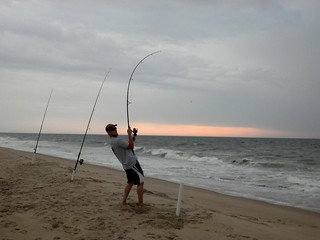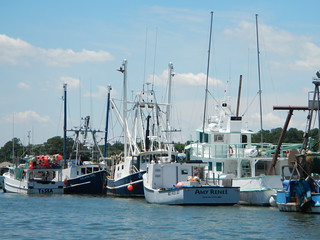Who We Are
Finfish
populations in Maryland's Coastal Bays are primarily monitored by the Coastal Fisheries Program. This is a program within the State of Maryland Department of Natural Resources, Fishing and Boating Services. They conduct fisheries independent research and work with for hire, commercial and recreational fishermen, seafood dealers, state and federal management agencies, and other local organizations.
Maryland's Coastal Fisheries
Recreational Fisheries

There are diverse inshore and offshore recreational fishing opportunities out of Ocean City, Maryland. Inshore opportunities abound from boats (private, rental, or charter), piers, bridges, bulkheads, jetties, and surf fishing. Inshore anglers catch summer flounder, black sea bass, tautog, croaker, spot, kingfish, red drum, bluefish, rays, skates, and sharks. Offshore, billlfishes, swordfish, tunas, mahi mahi, wahoo, tilefish, and sharks are frequently caught. Tautog, black sea bass, and summer flounder are abundant closer to shore.
Commercial Fisheries

The commercial fishing fleet out of Ocean City, Maryland is a small fleet dominated by three fisheries: trawlers, gill netters, dredgers and potters. Trawlers (large vessels that operate largely offshore) target species such as horseshoe crabs, summer flounder, and spiny dogfish; gill netters targets species such as striped bass, potters target black sea bass and whelk, and dredgers target clams and scallops. Due to changes in scallop and clam fisheries, the dredgers out of Ocean City are limited to one or two vessels. The commercial fishing vessels out of Ocean City are much larger than vessels on the Chesapeake Bay, and the fishermen are often permitted by the National Marine Fisheries Service. The fishermen often fish in federal waters and state waters, and must be familiar with both sets of regulations. They submit commercial landings reports to the state and the National Marine Fisheries Service.